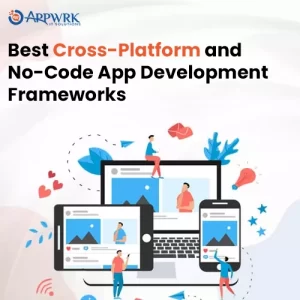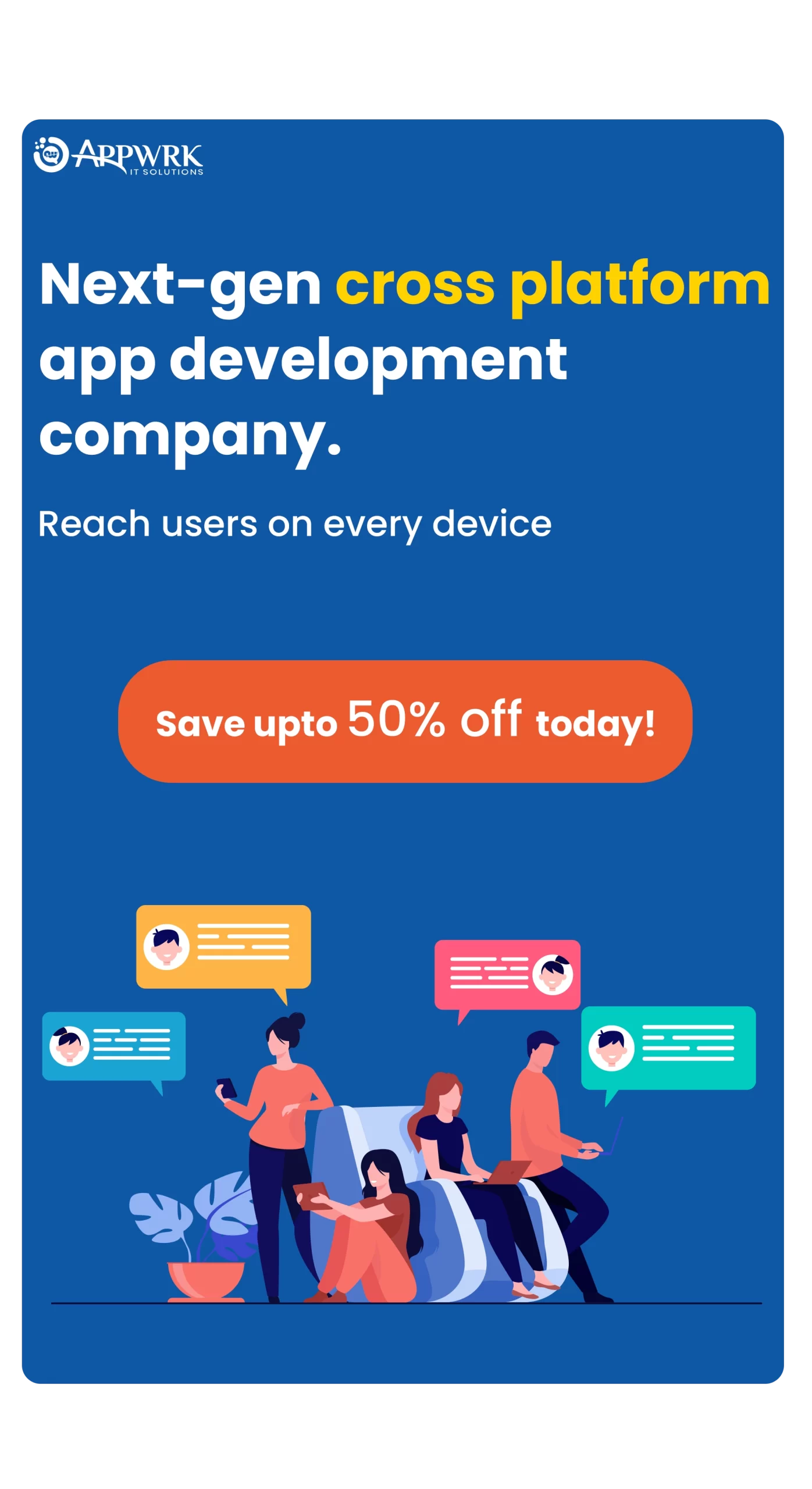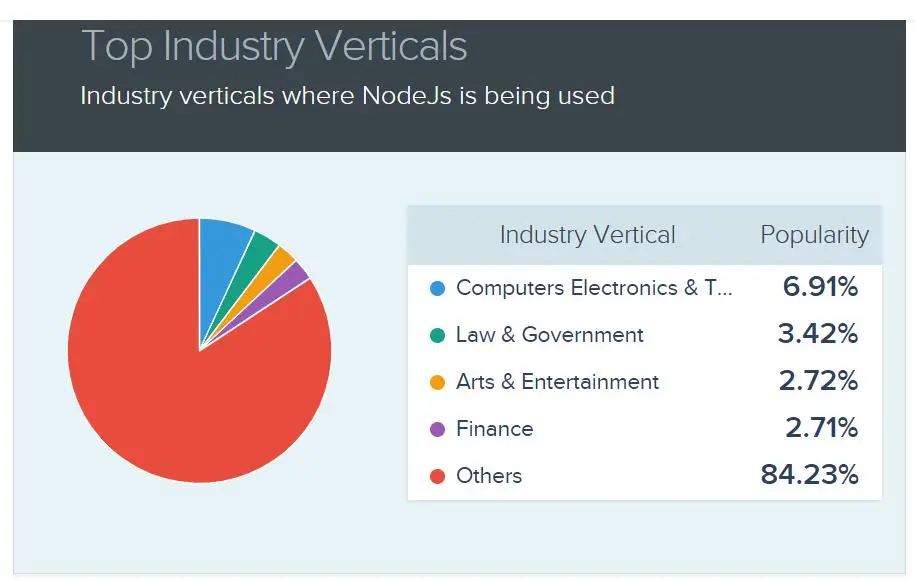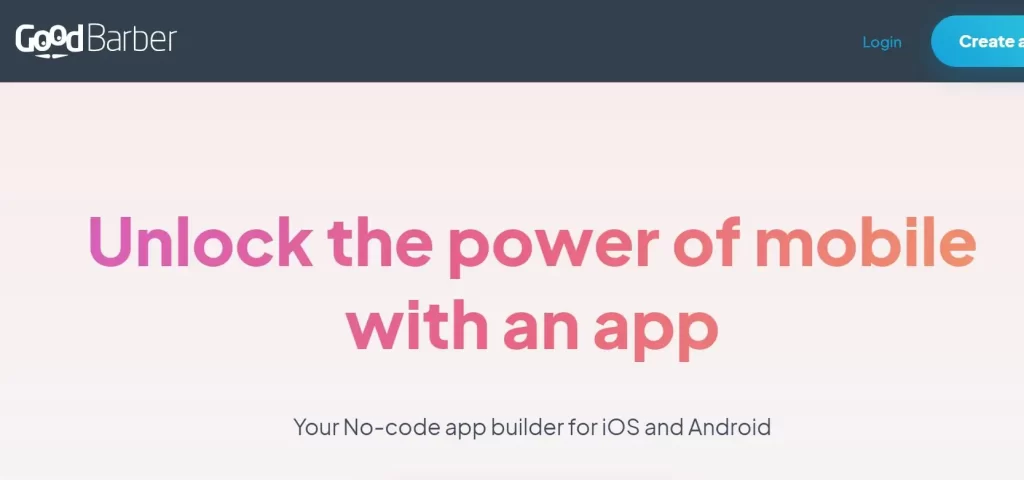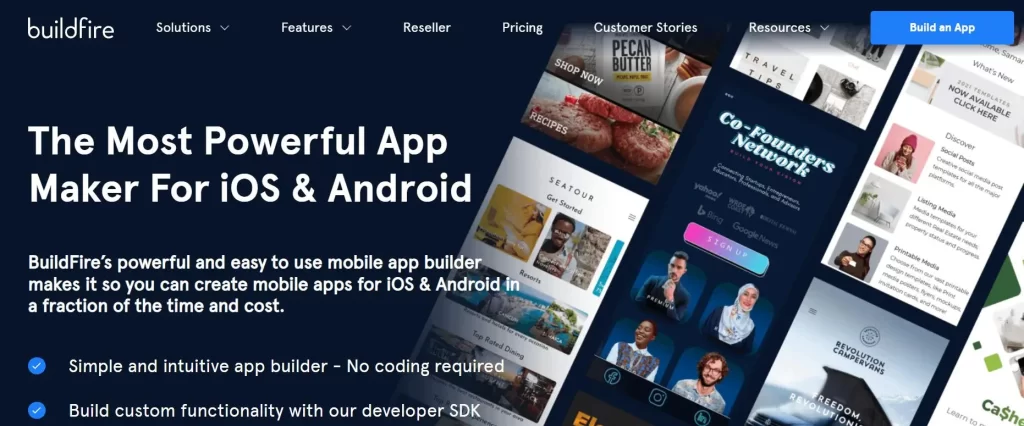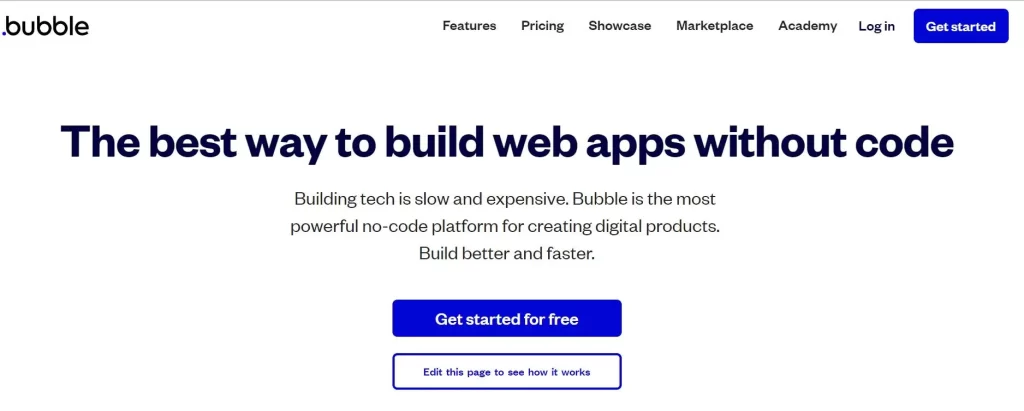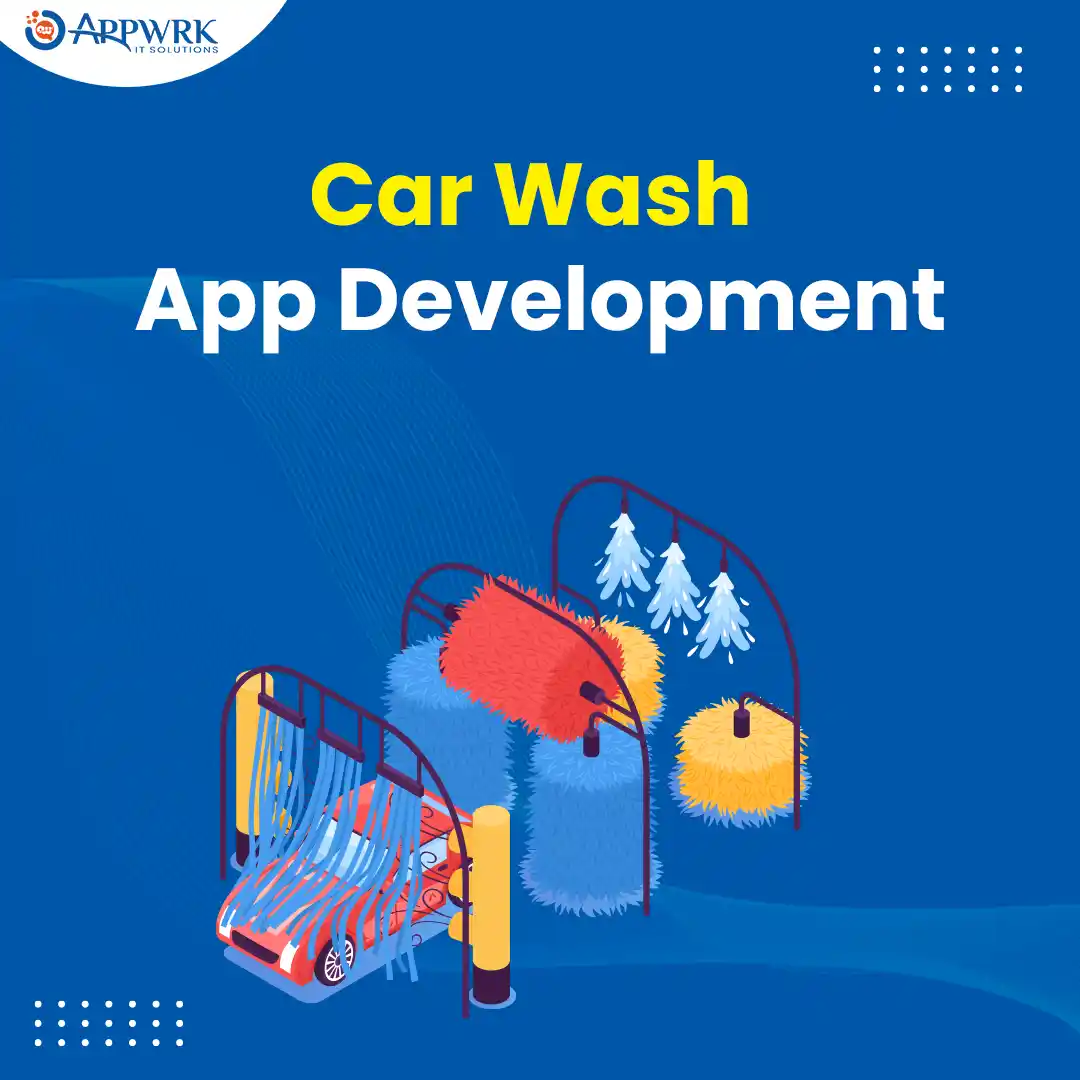10 Best Cross Platform App Development Frameworks 2024
Cross platform app development in 2024 is undoubtedly the best way to reach a wider audience cost-effectively. As you know, technology is continuously changing and so are changing the web and mobile app development methods.
Today, businesses and companies leave no stone unturned to reach their potential customers through different mediums like desktops, tablets, mobiles, PCs, etc. With more than 6.6 billion smartphone users in 2022, no business can afford to lose its presence on vastly used mobile application development frameworks – Android & iOS. This is where cross platform app development comes in. Cross-platform app development frameworks permit a single code base for both making it a more affordable method than native application development.
One question that might be running through your mind is how to choose the best framework for your app development.
This blog will help you; here, we have curated a list of the best frameworks for iOS and Android app development, which will help expand your business in 2024.
Before exploring the list of cross platform app development frameworks, let’s start from the basics and understand more about cross platform development and how it is better than native development.
Table of contents
What is Cross Platform App Development?
Cross platform app development, as the name suggests, is a method of creating software applications that are compatible with multiple mobile operating systems or platforms, including Android, iOS, and Windows applications.
Traditionally, developing native applications for each mobile OS was time-consuming and expensive, as the code built for one operating system could not be repurposed for another. Cross-platform development provides a solution to these challenges by allowing some or even all of the source code to be shared across platforms

Due to the combination of independent and native code, these cross platform applications have a native look and feel. Here developers can write the code once and reuse it, thus making it the most cost-effective and fast application development method.
Difference between Native and Cross Platform App Development in 2024
Let us now understand and cover some more points to distinguish between cross platform and native mobile app development for a better understanding.

Benefits of Cross Platform Mobile App Development in 2024
Cross platform mobile app development is perfect for start-ups and already-established businesses, as it helps increase your customer base. It is ideal for a Minimum Viable Product (MVP) when you have big potential but a limited budget and time. The cross platform app development frameworks have compatibility in iOS and Android and with popular operating systems – Linux, Windows, Blackberry, and more. Moreover, cross platform frameworks are the best choice if you are looking for a simple mobile application without complex functions and animations.
When leveraging cross-platform app development frameworks for enterprise solutions, integrating mobile consulting enhances expertise, ensuring optimal app performance and user satisfaction across diverse platforms. Mobile developers and designers provide valuable insights and guidance on design, functionality, and optimization, amplifying the advantages of cross-platform development and facilitating smoother implementation of enterprise solutions.

- Reduced Cost and Resources
Cross platform development is based on the concept of reusable codes and follows agile app development processes. That helps you manage budget, quality, and development time.
- Increase Exposure to Target Customers
Mobile apps created using cross platform app development frameworks can be deployed over various platforms. Hence by developing a single app, you can target Android and iOS platforms and thus increase your business reach.
- Easy Deployment & Maintenance
Mobile app developers must maintain and write single source code in cross platform development methods. It results in easy and fast development and even makes it easier to maintain your app. Moreover, updates are easier to make as they are synced across various platforms, instantly saving effort and time.
- Uniform Design
It is easier to share a unified UI/UX across multiple platforms while maintaining all platform-specific standards. Thus, providing users with a consistent experience will help them interact with your app on any platform easily.
- Easy Integration with Cloud
The cross platform apps are easy to integrate with the cloud. The cross platform app developers coordinate the single source code with various extensions and plugins to increase the functionality and scalability of your app.
Top 10 Cross Platform App Development Frameworks in 2024
1. Flutter

Flutter has rapidly emerged as a standout framework in the world of cross platform app development. Developed by Google and launched in 2017, Flutter is a free, open-source UI software development kit. It’s particularly noted for its cost-effectiveness and efficiency in creating cross platform applications. According to Statista, almost 46% of developers use this framework for application development, making it a popular choice among developers and companies alike.
Give it a read!
This cross platform framework consists of an SDK (Software Development Kit) and a widget-based UI library. The library included many reusable UI elements, such as buttons, sliders, and text inputs.
According to the Stack Overflow survey, Futter is the most loved framework among developers.
The exclusive features provided by Flutter make it a strong contender in the cross platform war of Flutter vs React Native.
Top apps built with Flutter
- Google Ads
- Reflectly
- Cryptograph
- KlasterMe
- Postmuse
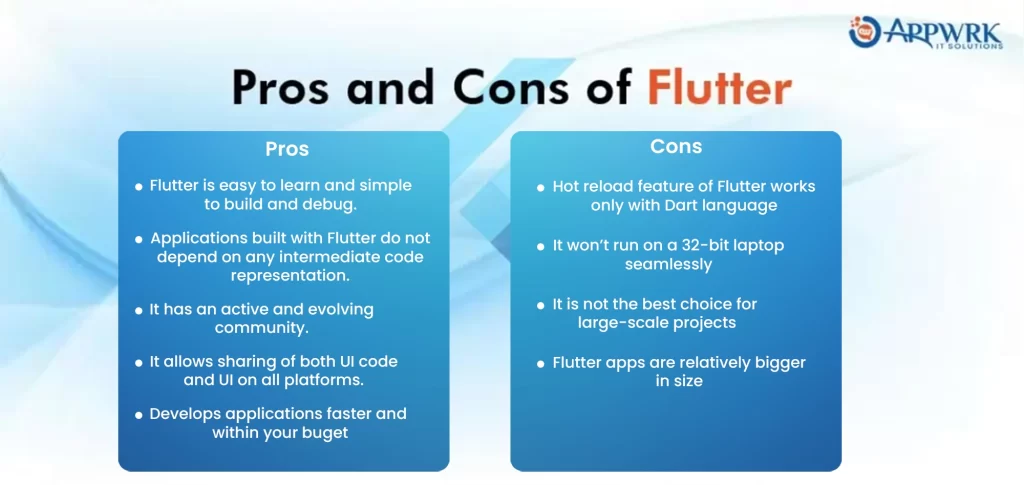
Features of Flutter
- Flutter’s hot reload feature lets developers see code changes instantly, speeding up app development.
- It’s great for building custom widgets, allowing for tailored designs in Flutter app development.
- The main components of Flutter include its engine, Dart platform, foundation library, and design-specific widgets.
- Flutter has its own graphics engine, enhancing the visual quality of apps.
- Ideal for MVPs, Flutter enables quick and efficient prototyping of app ideas.
2. Ionic
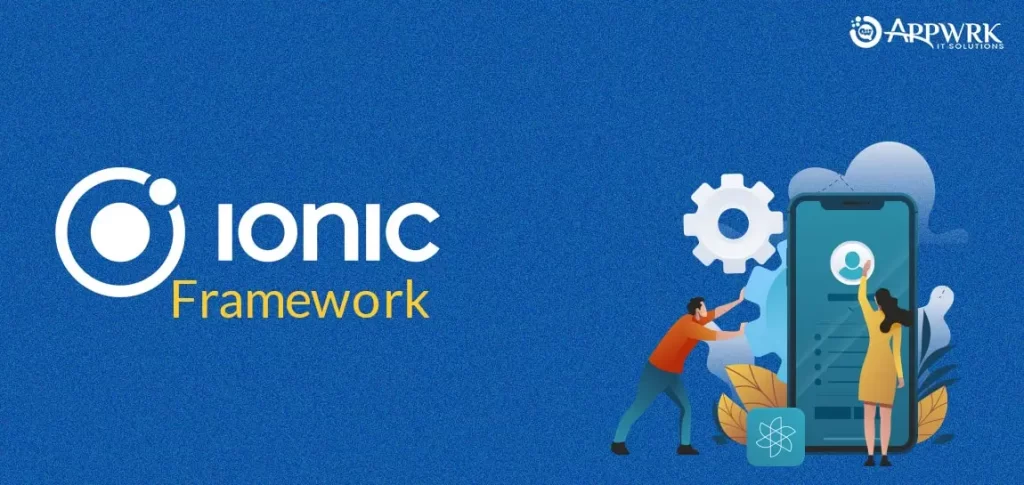
Launched in 2013 by Drift CO, Ionic is a free and open-source framework designed for creating apps that work across different platforms. It’s known for its mobile SDK, which is a big draw for developers because it lets them write code once and use it on Windows, iOS, and Android. Since then, various versions of the Ionic platform have been launched, allowing Ionic developers to develop unusual and innovative mobile applications.
Since its first release, Ionic has been updated with new versions, each adding more tools and features for developers. This has made it a go-to framework for Android as well as iOS mobile app development.
Ionic Usage Statistics
Top apps built with Ionic
- Market Watch
- Sworkit
- Diesel
- Honeyfi
- JustWatch
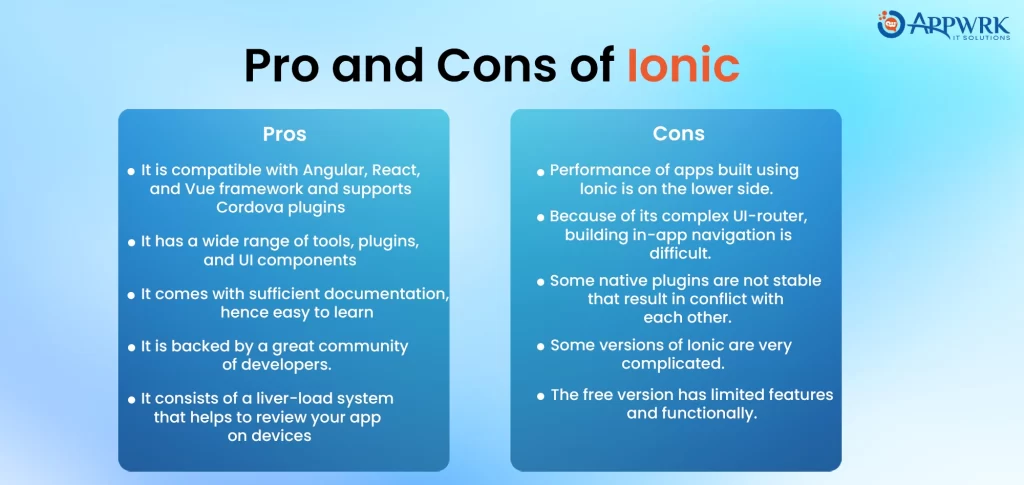
Features of Ionic
- It provides a rich library of components and tools, making it easier for developers to build apps.
- Offers great results when combined with Angular, especially for structuring the app.
- It’s commonly used for making native apps and Progressive Web Apps (PWAs).
- This framework uses familiar front-end technologies like HTML, CSS, JavaScript, and Angular, which are key in mobile app development.
3. React Native
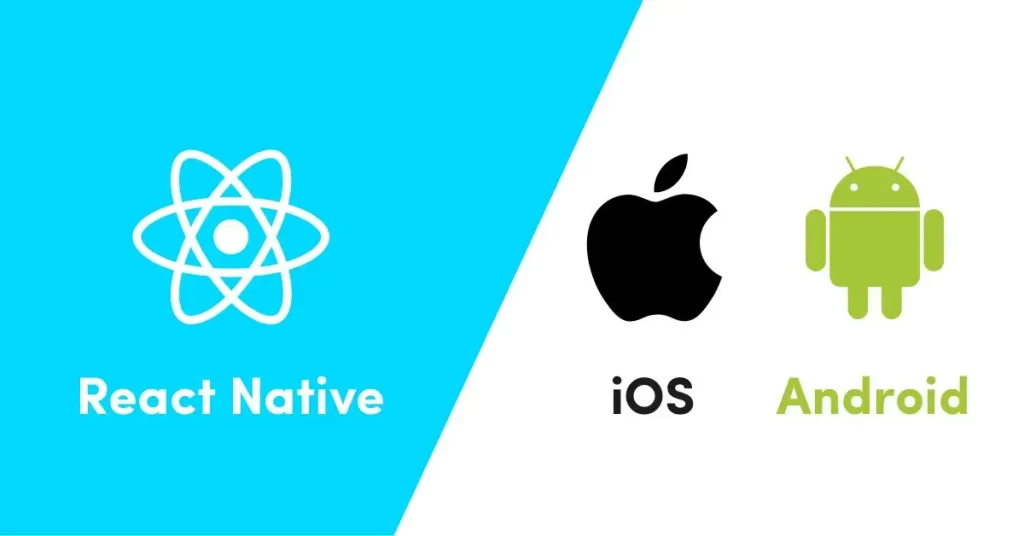
Introduced by Facebook in 2015, React Native is an open-source JavaScript framework designed for building mobile apps that run natively on both Android and iOS. One of the standout features of React Native, like many cross platform app development frameworks, is its ability to allow a significant portion of the code to be shared across different platforms.
React Native combines the native look and feel of mobile apps with the familiarity and ease of a JavaScript library. This blend makes React Native a good start for developing mobile apps, especially for those who are already comfortable with JavaScript.
React Native is versatile in its implementation. Developers have the option to integrate React Native components into an existing app’s code or to repurpose Cordova-based code with plugins. This flexibility makes React Native a preferred choice for many cross platform mobile app development companies.
Let’s check the popularity of React Native on Google Trends.
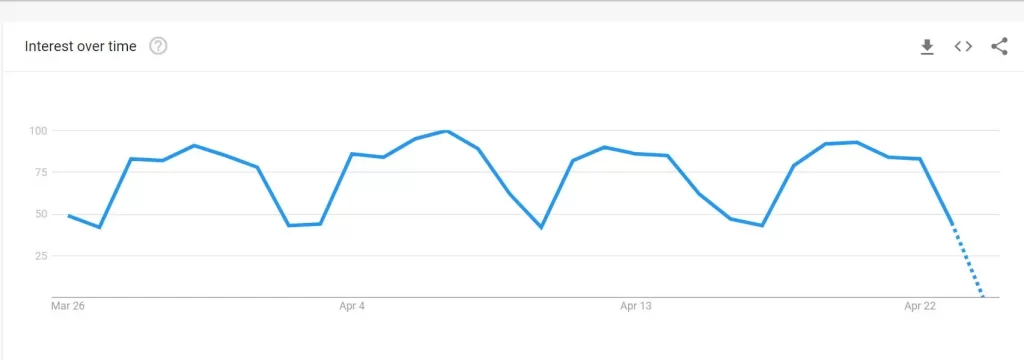
Top apps built with React Native
- Skype
- Facebook Ads
- Walmart
- Uber Eats

Features of React Native
- React Native provides a native-like experience, which is stable and responsive, making it a leading choice in cross platform mobile development.
- It supports multiple programming languages such as Objective-C, JavaScript, Java, C++, and Python, making it an ideal choice for mobile app development.
- It emphasizes the concept of maximum code reuse, which leads to significant savings in both time and resources in app development.
- React Native has a wide array of ready-to-use plugins, enhancing the functionality and efficiency of developing different types of apps.
4. Xamarin
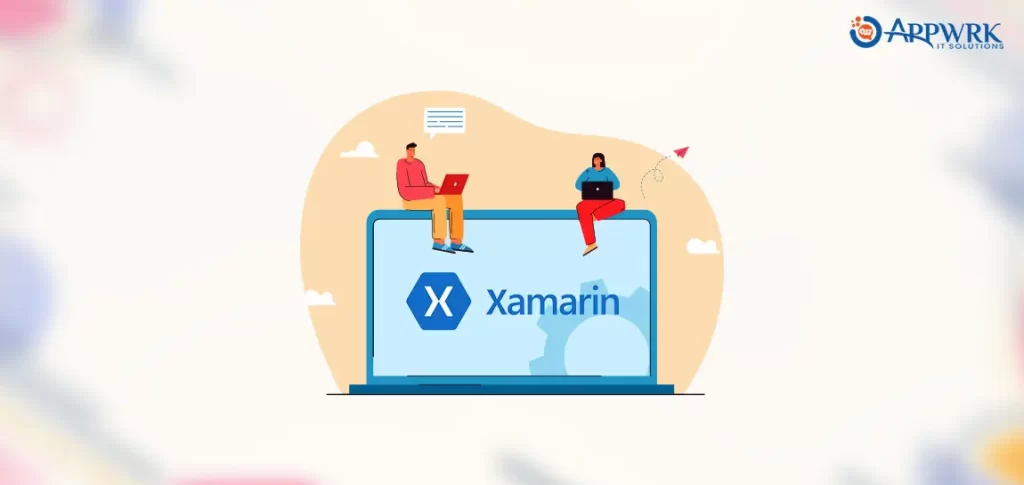
Xamarin is a framework that was developed by Microsoft in May 2011. It’s built on the Microsoft technology stack and is known for its efficiency, allowing developers to share up to 90% of their code across major platforms. It is easy to work on this framework as it is backed by a vast community with more than 1.4 million developers. Thus, if you come across any issue, it gets resolved readily.
Xamarin’s native-friendly interface and controls simplify the creation of apps that offer a native experience, a key aspect in cross platform mobile development. Its integration with Visual Studio is another highlight, enabling Windows, iOS, and Android app development.
According to Google Trends Xamarin worldwide search stats:
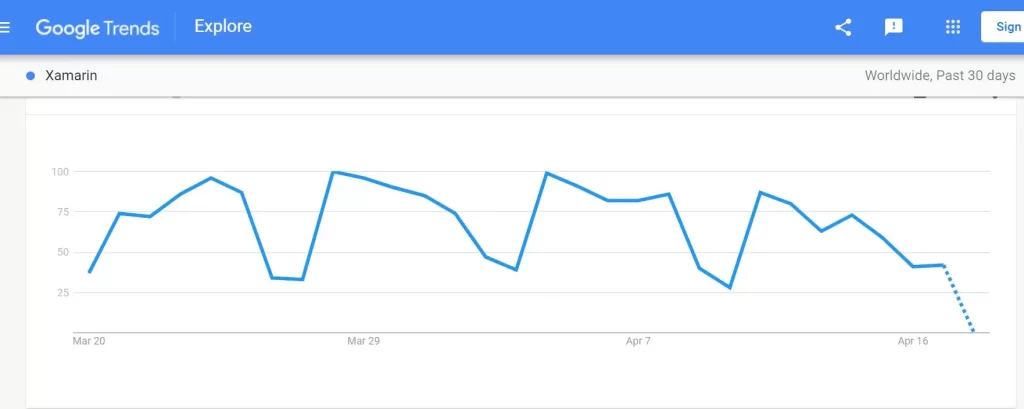
Top apps built with Xamarin
- Picturex
- Captio
- Storyo
- APX
- Vanderlande
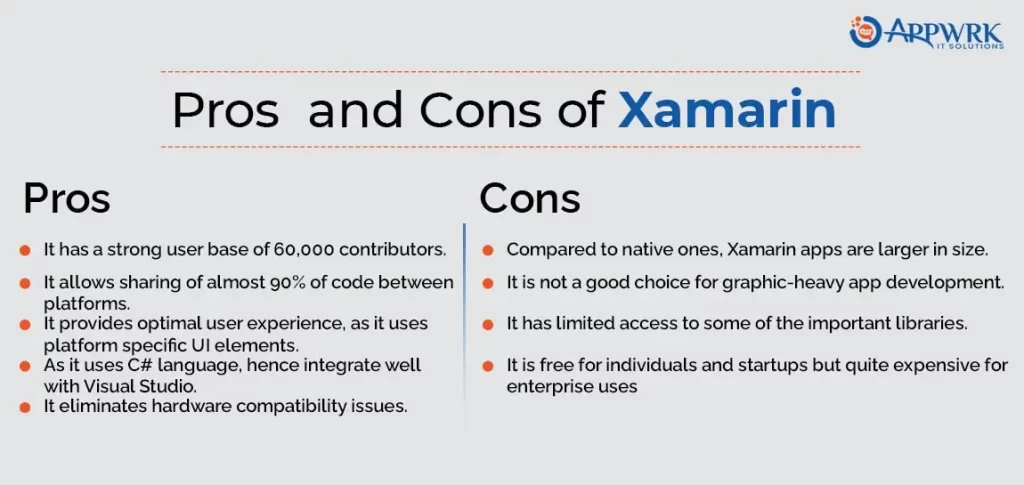
Features of Xamarin
- This framework allows testing apps across multiple devices using cloud services.
- The framework’s support for plugins and specific APIs helps to minimize hardware compatibility issues tackling a common challenge in mobile app development platforms.
- It supports the direct inclusion of Java, Objective-C, and C++ libraries, enhancing its flexibility and utility in app development.
- The Xamarin Component Store allows Xamarin developers to easily add components to their apps directly from the IDE.
5. Node.js
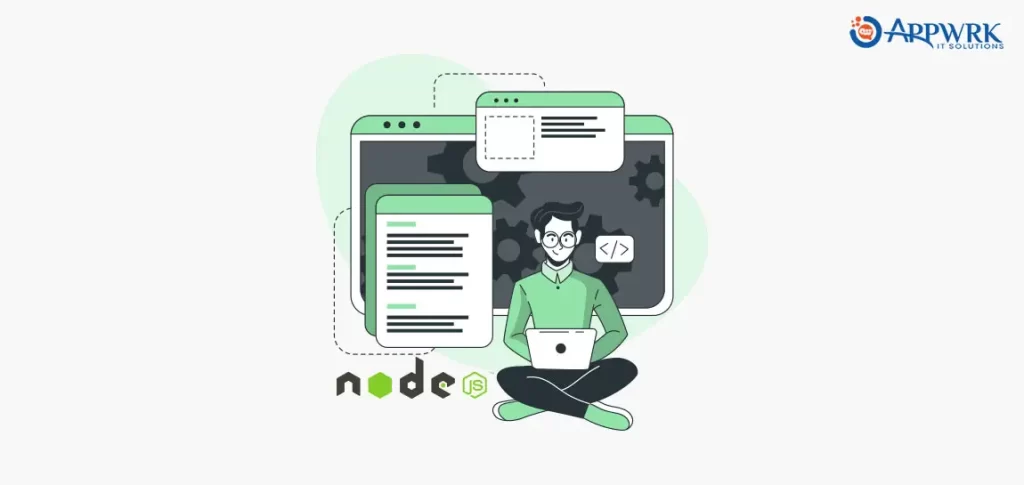
Node.js, an open-source framework, has made a significant impact in the world of cross platform app development since its creation in 2009 by Ryan Dahl. Built on Google’s V8 JavaScript Engine, Node.js is primarily utilized for server-side and network application development. Due to its amazing features and functionality, it is used by start-ups and established businesses.
Node.js is a powerful runtime environment that allows developers to use JavaScript for server-side programming. It comes with a rich library of JavaScript modules, which accelerates the Node.js development process. Its non-blocking, event-driven architecture, along with the extensive NPM ecosystem, makes it a popular choice.
Top apps built using Node.js
- Netflix
- Uber
- Yahoo
- Mozilla
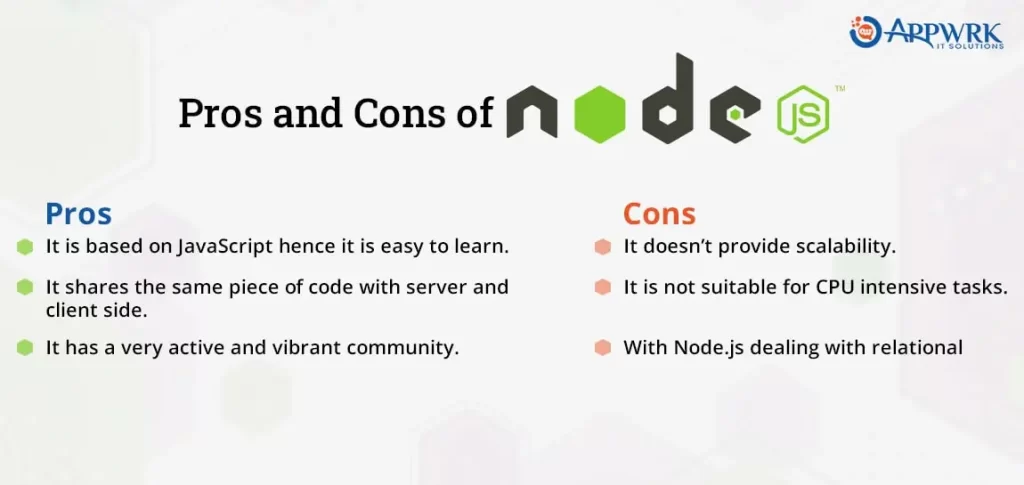
Features of Node.js
- Node.js’s library is known for its speed, which is a crucial factor in cross platform development.
- Node.js applications output data in chunks without buffering, enhancing performance.
- Single-threaded with an event looping feature allows Node.js to handle numerous simultaneous connections efficiently.
- All APIs in Node.js are asynchronous, meaning the server doesn’t wait for an API to return data, reducing downtime and improving app responsiveness.
6. Adobe PhoneGap
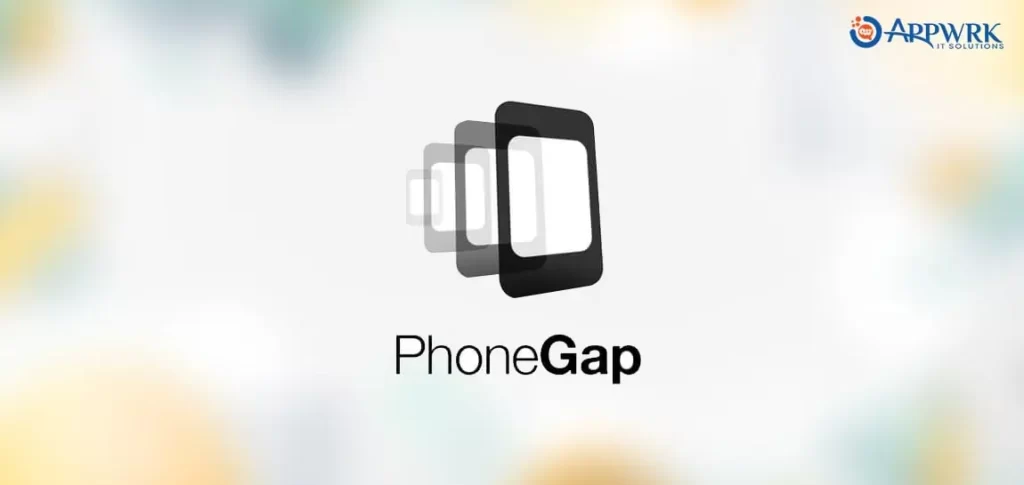
Adobe PhoneGap, a free and open-source framework, has been a key player. Originally developed by Nitobi and acquired by Adobe in 2011, PhoneGap is built on the Apache Cordova project. This framework is unique in its use of standard web technologies, adapting Java for Android, Objective-C for iOS, and C# for Windows phone applications.
PhoneGap functions by wrapping HTML pages in a native app shell, allowing these applications to access native APIs and deploy to various platforms. The framework is known for its ability to integrate various libraries with existing code, simplifying and accelerating the development process. This feature is particularly beneficial for cross platform mobile app development companies looking for efficient ways to develop apps.
Adobe PhoneGap Usage Statistics
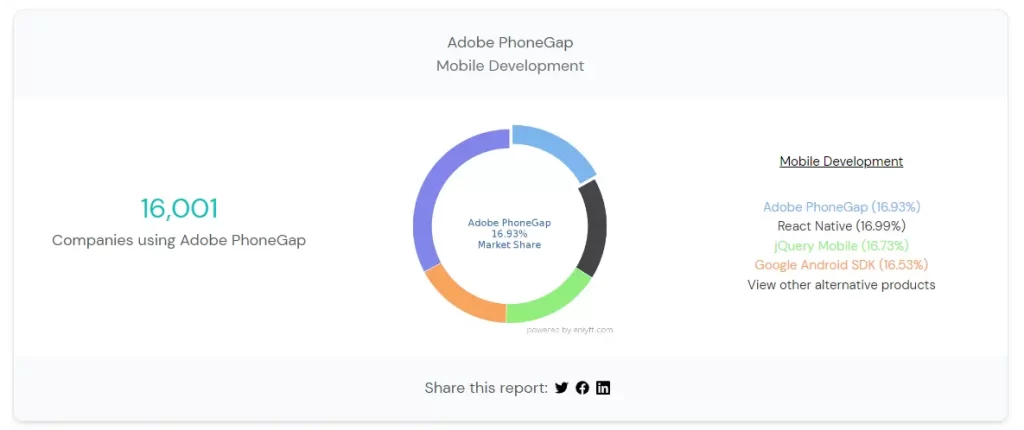
Top apps built with Adobe PhoneGap
- The DHS Program
- Paylution
- Wikipedia- The Free Encyclopedia
- HealthTap
- TripCase
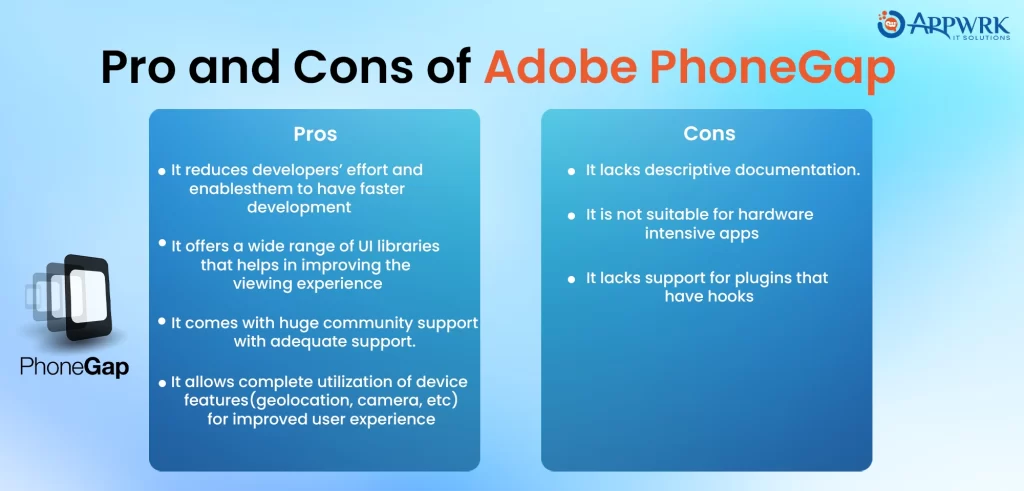
Features of Adobe PhoneGap
- It has a robust backend system due to which application development processes speed up.
- It provides great flexibility to the developers. Hence using this framework, any mobile application can be developed easily.
- The absence of hardware restrictions helps to enhance the framework’s adaptability.
7. Sencha Touch
Sencha Touch, a prominent framework from Sencha, plays a significant role in the world of cross-platform app development. It’s tailored for crafting mobile app interfaces using CSS, HTML, and JavaScript, and is grounded in the MVC (Model-View-Controller) architecture.
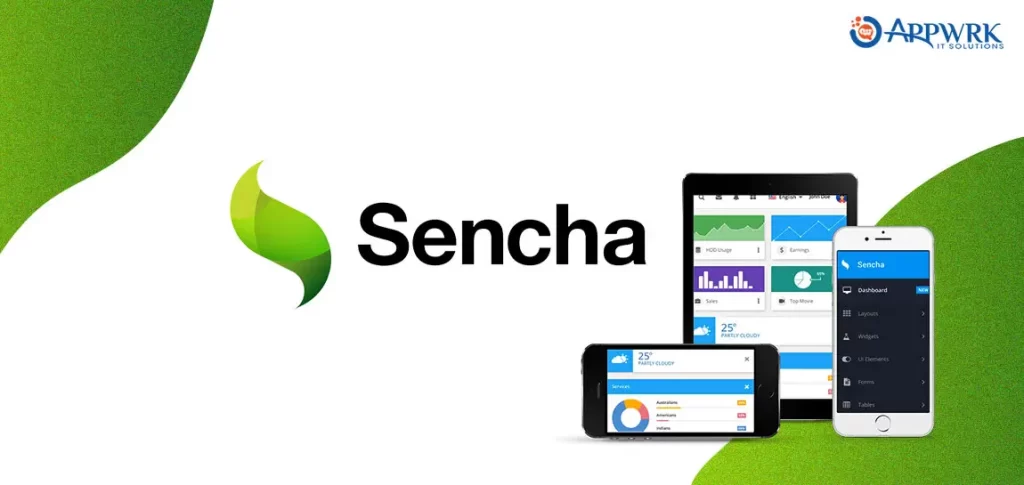
This cross platform framework can perfectly replicate almost all native features. It has emerged as the best framework for developing complex web applications that need to replicate a native app in the past few years. Let’s have a look at the market share of Sencha.

Companies using Sencha Touch in their tech stacks are-
- Applic8
- Telstra
- One hat
- Reliance Industries
- XT
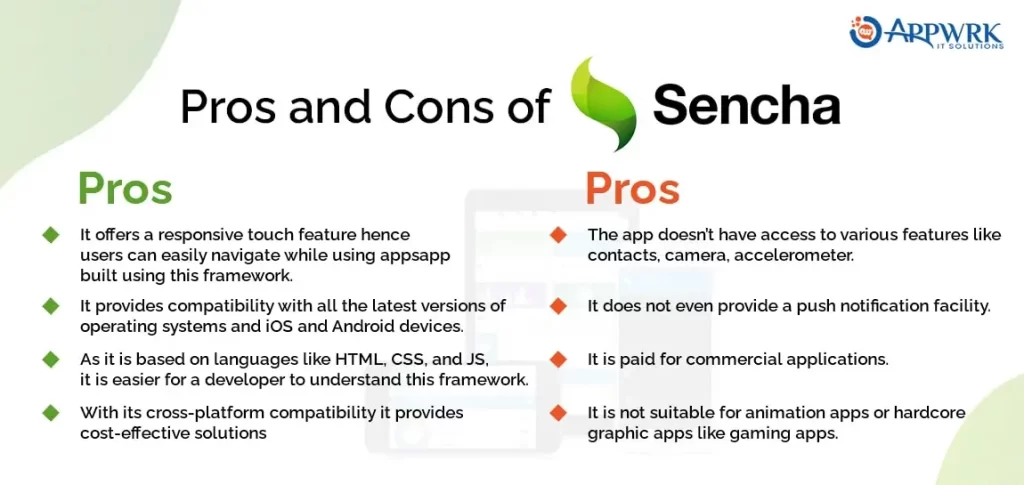
Features of Sencha Touch
- The latest versions of the framework have code compatibility with the older ones.
- The application developed has adaptive layouts, smooth scrolling, and animations that provide a better user experience.
- You can highly customize your application with a collection of rich UI and 50+ UI widgets.
- Sencha Touch provides themes that mimic the look and feel of target platforms.
8. Firebase
Initially an independent company founded in 2011 and later acquired by Google in 2014, Firebase has become a pivotal Backend-as-a-Service (BaaS) platform. This framework encompasses various amazing features, including a real-time database, authentication, cloud storage, hosting, machine learning, and more.

Firebase is one of the best cross platform app development frameworks loved by developers across the globe. It offers a wide range of services and tools that help developers quickly and easily develop, deploy, and manage applications. Since the services here are cloud-hosted, developers can efficiently conduct on-demand scaling without any hassle.
Industry verticals where Firebase is being used
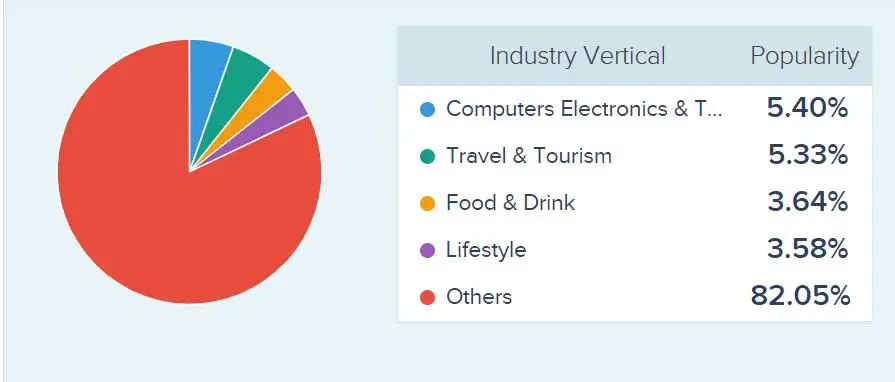
Top apps built with Firebase
- Alibaba
- Halfbrick
- Fabulous
- NPR
- Playbuzz
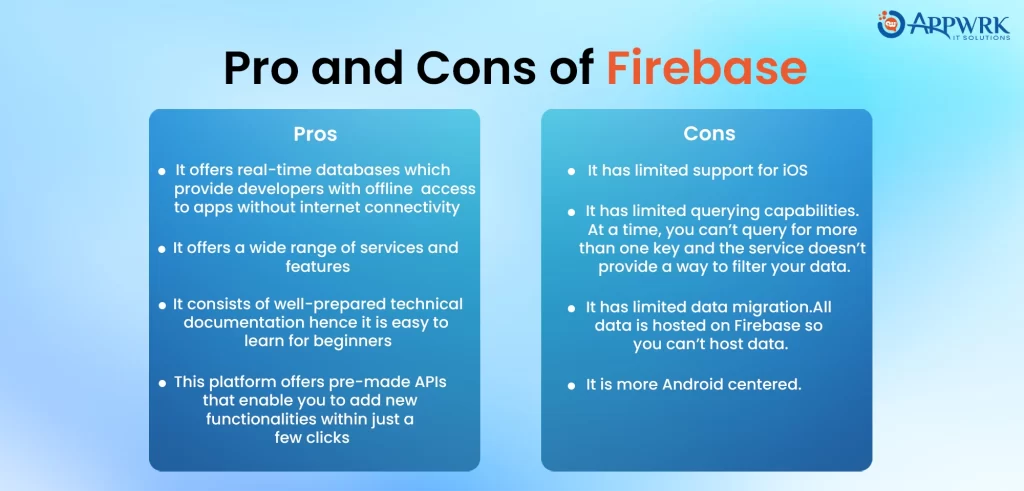
Features of Firebase
- Firebase allows for the reporting of 500 different events.
- You can easily integrate Firebase with other services such as Firebase CrashReporting, Google Tag Manager, Firebase Notification, Big Query, etc.
- Developers can easily store files in the database
- Firebase can store and sync app data in real-time, ensuring that the user experience is consistent and up-to-date.
9. NativeScript
NativeScript, a prominent player is an open-source cross platform framework known for its ability to develop native-like apps. It supports JavaScript and languages that transpile to JavaScript, like TypeScript, making it versatile for developers. Created by Progress in 2014, NativeScript was later taken over by nStudio, a long-term partner of Progress, in 2019.

Using JavaScript, TypeScript, or Angular, this framework provides direct access to all native platform APIs. It also offers a rich set of plugins and modules that extend its functionality, allowing developers to access device features like cameras, GPS, and sensors. These features ensure that apps developed with NativeScript deliver a native-like experience across iOS, Android, and the web.
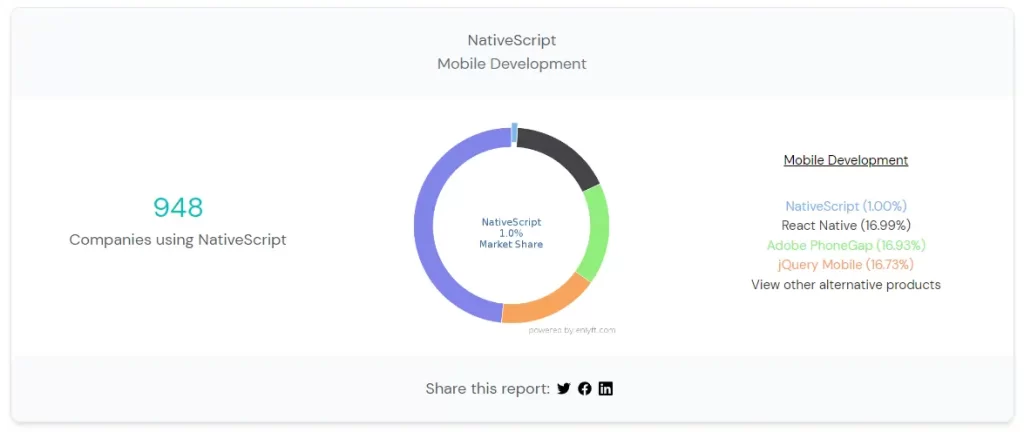
Top companies using NativeScript in their project
- FinTech Consortium
- GeekyAnts
- Beachy
- Monogramm
- Traverse LLC
Features of NativeScript
- Developers can use any view as the root of their mobile application, offering flexibility in UI design.
- NativeScript allows the use of more than one frame in an app
- The framework makes it easier to authenticate apps with various sign-on providers
- NativeScript uses Webpack and LiveSync simultaneously, streamlining the development process.
Corona SDK
Corona SDK, now known as Solar2D, is an open-source, cross-platform software development kit for building mobile applications and games. Developed in 2009 by Corona Labs Inc., Corona SDK primarily focuses on creating 2D mobile applications and games using the Lua programming language. Corona SDK provides a simple and streamlined development environment, making it accessible to developers of all skill levels, including beginners.
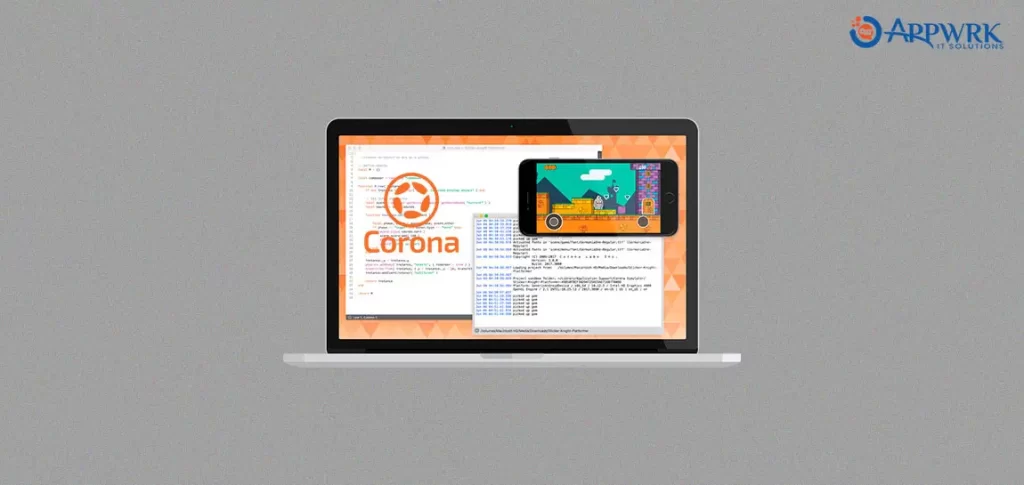
With OpenGL hardware acceleration for animation and graphics, Corona SDK is undoubtedly a high-performing multimedia development tool. It is well-suited for rapid development and prototyping, making it a popular choice for indie game developers and those looking to create 2D mobile apps efficiently.

Top apps built with Corona SDK
- Zip Zap
- Tiny Boxes
- Ava Airborne
- Scale
- PKTBALL
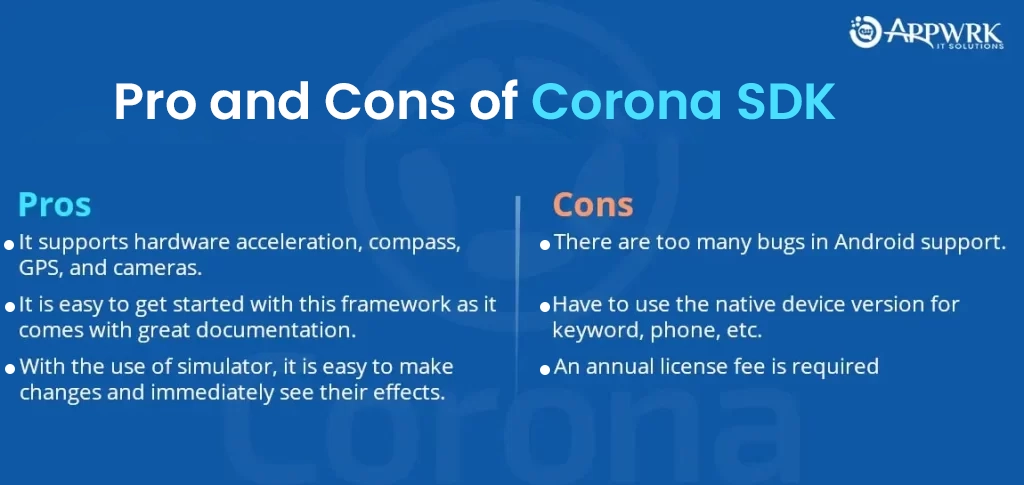
Features of Corona SDK
- Its real-time device testing saves lots of developers’ time.
- The monetization plugin of this framework allows you to take support of ads and banners and earn from your gaming apps.
- Its automatic AEL-GS integration makes screen manipulation easier.
- It consists of 1000 APIs and plugins that help to transform your ideas into fascinating apps. Thus, it is an excellent choice for cross platform development.
In 2024, the landscape of cross platform app development continues to evolve, offering developers a variety of frameworks to choose from. Here, we have discussed the top 10 best cross platform app development frameworks of 2024. These frameworks allow code sharing and reduce the time developers spend on coding. Ultimately, the choice of a framework depends on project requirements, development team expertise, and the specific needs of the application being developed.
But what if no time is invested in coding?
Yes, it is true; nowadays, various no-code cross-platform frameworks are available in the market in which you can quickly develop applications without any need for coding. Let’s discover in our next section how it is possible and what are the best no-code platforms for mobile application development.
No-code App Development Frameworks 2024 for iOS and Android
“Programming is not about typing; it is about thinking.”
Chris Wanstrath (GitHub CEO)
No-code app development is a method of application development without writing any code. By dragging and dropping pre-configure blocks, inexperienced developers can develop feature-rich applications. No HTML, no JavaScript, and no CSS. Isn’t it just like a dream to design an application by yourself? However, it needs technicalities, so it’s better to hire cross platform mobile app developers by going with no-platform. These no-code platforms make app development faster and easier than ever.
No-code cross platform app development platforms provide non-programmers and programmers to develop applications for all devices and operating systems through GUI (Graphical User Interfaces) and configuration. These platforms gained popularity among organizations with a limited supply of competent custom software developers and parallel trends of an increasing workforce.
Let’s cover some of the best no-code cross platform app development frameworks.
- AppGyver
- Goodbarber
- BuildFire
- AppyPie
- Bubble
Choose the Right Cross Platform App Development Framework with APPWRK

This blog has covered the top 10 cross-platform app development frameworks. But there are many other cross-platform frameworks, and many new ones will launch. Now the question is how to choose the best one for your business. You need to ask yourself and understand your business requirements and the purpose you want to achieve with application development. There are various factors you need to consider, but the most crucial ones are-
- A goal you want to achieve
- The expertise of the developers you hire
- Size of the company
You must consider these factors before deciding the best fit for your enterprise solutions. For example, if you are a startup or small company and want just simple applications for your business, then Ionic is the best choice. If you are a big, established organization looking for robust solutions, then Xamarin, Sencha, etc., are a good fit.
Final Words
As discussed earlier, cross platform app development helps increase the reach of your business. With the increase in the usage of smartphones today, most companies want to develop mobile versions of their website to remain competitive. Using the multiplatform app development method, you need to create one application that will run on multiple operating systems, including Android & iOS.
Having an excellent team of professional developers and designers is the only key to achieving highly robust applications that can skyrocket your business. APPWRK is one of the leading organizations for cross platform app development. We provide a wide range of cross-platform development services, including strategies, development, support, and maintenance. Get in touch with our team for the best cross-platform app development solutions today!
Related Links:
About The Author
